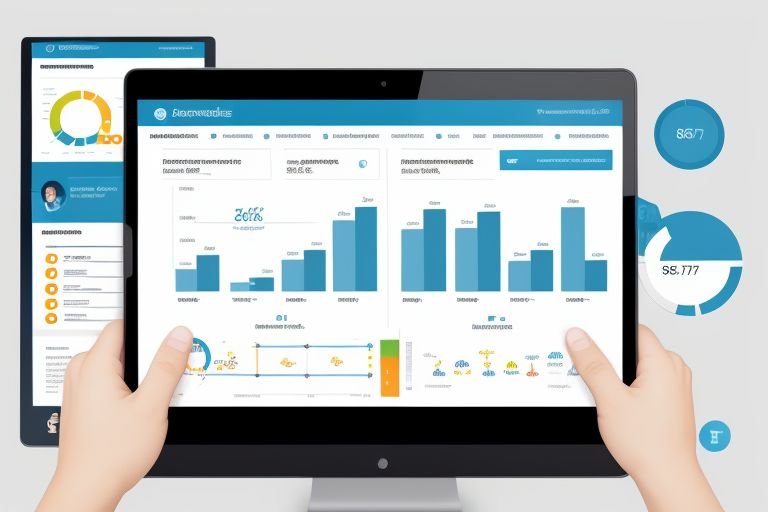The Basics of Email Marketing: A Beginner’s Guide

In the digital age, email marketing remains one of the most powerful tools for businesses to engage with their audience. Whether you’re promoting a new product, offering discounts, or simply nurturing relationships with customers, email marketing provides direct access to your audience’s inbox. For beginners, this guide will cover the essentials you need to get started, from understanding what email marketing is to setting up your first campaign.
What is Email Marketing
Email marketing is the practice of sending targeted emails to a list of subscribers, prospects, or customers with the goal of building relationships, increasing brand awareness, and driving sales. It allows businesses to connect with their audience in a personalized and measurable way.
Key Takeaways:
- Email marketing allows direct communication with your audience.
- Build your list with quality subscribers through sign-up forms, lead magnets, and promotions.
- Choose the right email marketing platform for your needs.
- Craft engaging emails with strong subject lines, clear content, and calls-to-action.
- Use segmentation and automation to send targeted and timely emails.
- Analyze key metrics like open rate and CTR to improve future campaigns.
Key Benefits of Email Marketing:
- Direct Communication: Emails go straight to the inbox, offering a direct line of communication.
- Cost-Effective: Compared to other marketing channels like social media ads or traditional advertising, email marketing is relatively inexpensive.
- Personalization: You can tailor your message to fit the needs and interests of your audience through segmentation and targeted content.
- Measurable Results: Email platforms provide valuable data, such as open rates, click-through rates, and conversions, allowing you to measure performance effectively.
- Automation: Modern tools allow for automated campaigns like welcome series, abandoned cart reminders, and post-purchase follow-ups.
Step 1: Building Your Email List

An email list is a collection of contacts who have agreed to receive communication from your business. Building a high-quality, engaged email list is crucial for effective email marketing.
Ways to Build an Email List:
- Website Sign-Up Forms: Place a sign-up form on your website, offering a reason for visitors to join your list (e.g., exclusive content, discounts).
- Lead Magnets: Offer something valuable (e.g., an eBook, checklist, discount) in exchange for visitors’ email addresses.
- Social Media: Promote your email newsletter or offer on your social channels to gain subscribers.
- Contests and Giveaways: Use promotions as a way to collect email addresses.
- In-Person Events: Gather emails at events, trade shows, or in-store visits.
Always follow permission-based marketing rules by obtaining consent from users before adding them to your list. Compliance with email regulations such as GDPR and CAN-SPAM is essential to avoid penalties.
Step 2: Choosing the Right Email Marketing Platform

To launch successful email campaigns, you’ll need an email marketing platform. This software allows you to create, send, and track emails, often with built-in tools for automation and segmentation.
Popular Email Marketing Platforms:
- Mailchimp: A user-friendly platform ideal for beginners, with free plans for small businesses.
- Constant Contact: Great for more extensive email marketing needs, offering various templates and reporting tools.
- ConvertKit: Excellent for creators and small business owners focused on automation.
- ActiveCampaign: A more advanced platform for businesses focused on sales and marketing integration.
- Sendinblue: Known for its simplicity and affordability with excellent automation tools.
When selecting a platform, look for features like ease of use, pricing, integrations with other tools, templates, automation capabilities, and customer support.
Step 3: Crafting the Perfect Email
An engaging email requires both compelling content and a clear design. Here are some important elements to include when crafting your email:
Components of an Email:
- Subject Line: The first thing recipients see—keep it short, engaging, and informative. It should encourage the reader to open the email.
- Example: “Unlock 25% Off Your Next Order – Limited Time Offer!”
- Preheader: A small snippet that follows the subject line, giving more context to the email.
- Body Content: The core of your email. Use concise, engaging text and images to get your message across.
- Call-to-Action (CTA): Every email should have a purpose. Whether it’s driving readers to your website or encouraging them to make a purchase, a clear CTA helps.
- Example: “Shop Now,” “Learn More,” or “Download Free Guide”
- Personalization: Use the recipient’s name or tailor content based on their past interactions with your brand.
- Mobile-Friendly Design: Ensure your emails are optimized for mobile devices, as a large portion of users will view emails on smartphones.
Step 4: Automation and Segmentation

Segmentation and automation can transform a basic email strategy into a personalized and highly effective marketing campaign.
Segmentation: Dividing your email list into smaller groups based on certain criteria (e.g., location, purchase history, interests) ensures you send relevant content to each segment.
Automation: Automation allows you to send emails at the right time without manual intervention. For example:
- Welcome Series: Automatically send a series of welcome emails to new subscribers.
- Cart Abandonment: If a customer leaves without completing a purchase, trigger a follow-up email to remind them.
- Birthday Emails: Send personalized offers on customers’ birthdays.
These automated workflows help you stay connected with your audience without requiring constant oversight.
Step 5: Analyzing and Optimizing Your Campaigns
Once your email is sent, tracking its performance is crucial. Most email marketing platforms provide data on various metrics that can help you understand what works and what needs improvement.
Key Metrics to Track:
- Open Rate: The percentage of people who opened your email.
- Click-Through Rate (CTR): The percentage of recipients who clicked on a link within the email.
- Conversion Rate: The percentage of users who completed the desired action (e.g., made a purchase).
- Bounce Rate: The number of emails that couldn’t be delivered.
- Unsubscribe Rate: The percentage of people who opted out of receiving future emails.
Regularly analyzing these metrics will help you optimize future campaigns for better performance.
Also Read: The Role Of AI In Marketing Automation: A Critical Perspective
Conclusion
Email marketing, when done right, can be a highly effective tool for growing your business. By building an engaged email list, crafting compelling messages, and using automation and segmentation, you can foster stronger relationships with your audience, drive sales, and grow your brand. Remember, consistency and personalization are key to long-term success in email marketing. With time, testing, and learning, even beginners can master this essential digital marketing skill.
FAQs
1. What is the best email marketing platform for beginners?
Mailchimp is often recommended for beginners due to its user-friendly interface and free plan for small businesses. Other platforms like Sendinblue or Constant Contact are also great choices depending on your needs.
2. How often should I send marketing emails?
It depends on your audience and business. Some businesses send weekly newsletters, while others may send emails once or twice a month. Be consistent but avoid overwhelming your subscribers with too many emails.
3. How do I avoid my emails going to the spam folder?
To avoid landing in spam, follow best practices: obtain permission before emailing, use a reputable email service provider, avoid spammy subject lines, and include an easy-to-find unsubscribe link.
4. What is email segmentation?
Email segmentation involves dividing your email list into smaller groups based on specific criteria (e.g., location, behavior, demographics) so you can send more personalized and relevant content to each group.
5. How can I improve my email open rates?
Improve open rates by crafting compelling subject lines, personalizing emails, sending at optimal times, and cleaning your email list regularly to remove inactive subscribers.




